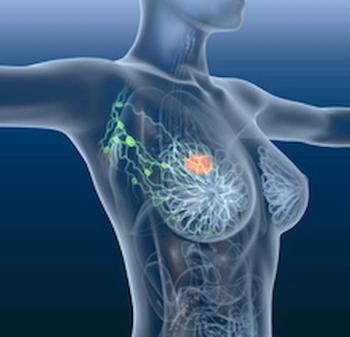
FDA Approves sNDA for Neratinib in Combination with Capecitabine for HER2+ Breast Cancer
The FDA approved a supplemental new drug application for neratinib in combination with capecitabine for the treatment of adult patients with advanced or metastatic HER2-positive breast cancer who have received at least 2 prior anti-HER2-based regimens in the metastatic setting.
The FDA approved a supplemental new drug application (sNDA) for neratinib (Nerlynx) in combination with capecitabine (Xeloda) for the treatment of adult patients with advanced or metastatic HER2-positive breast cancer who have received at least 2 prior anti-HER2-based regimens in the metastatic setting, according to Puma, neratinib’s developer.
The approval was based on results from the phase III NALA trial, which was a randomized controlled trial that looked at neratinib plus capecitabine in patients with HER2-positive metastatic breast cancer who have received 2 or more prior anti-HER2-based regimens. The trial was conducted globally at sites in North America, Europe, Israel, Asia-Pacific, and South America.
“Together with the NALA investigators around the world, I am pleased to see the FDA approval of Nerlynx for the treatment of advanced HER2-positive metastatic breast cancer,” Adam M. Brufsky, MD, PhD, of Magee-Women’s Hospital and the Hillman Cancer Center at the University of Pittsburgh Medical Center, said in a press release. “This approval is based on data from the NALA trial, which we presented at ASCO last year, demonstrating that neratinib in combination with capecitabine offers a significant improvement over currently available therapies in this heavily pretreated patient population and can be added to Nerlynx’s established role in the treatment of early breast cancer.”
In the phase III clinical trial, 621 patients were randomized 1:1 to receive either 240 mg of neratinib orally once daily on days 1-21 of the study in combination with 750 mg/m2 of capecitabine given orally twice daily on days 1-14 for each 21 day cycle (n = 307) or 1,250 mg of lapatinib (Tykerb) orally once daily on days 1-21 in combination with 1,000 mg/m2 of capecitabine given orally twice daily on days 1-14 for each 21-day cycle (n = 314). The patients were treated until disease progression or unacceptable toxicity.
The main efficacy outcome measures were progression-free survival (PFS) and overall survival (OS). Key secondary outcome measures included objective response rate (ORR) and duration of response (DOR).
Treatment with neratinib in combination with capecitabine resulted in a statistically significant improvement in PFS (HR, 0.76; 95% CI, 0.63-0.93; P = 0.0059) compared to treatment with lapatinib plus capecitabine. The PFS rate at 12 months was 29% (95% CI, 23-35) for patients who received neratinib plus capecitabine vs 15% (95% CI, 10-20) for patients who received lapatinib plus capecitabine and the PFS rate at 24 months was 12% (95% CI, 7-18) vs 3% (95% CI, 1-8), respectively.
Moreover, median OS was 21 months (95% CI, 17.7-23.8) for patients who received neratinib in combination with capecitabine compared to 18.7 months (95% CI, 15.5-21.2) for those who received lapatinib in combination plus capecitabine (HR 0.88; 95% CI, 0.72-1.07; P = 0.2086). The ORR was 32.8% (95% CI, 27.1-38.9) vs 26.7% (95% CI, 21.5-32.4), respectively, and the median duration of response was 8.5 months (95% CI, 5.6-11.2) vs 5.6 months (95% CI, 4.2-6.4), respectively.
The most common adverse events (AEs) reported, of any grade (>5%), in the neratinib plus capecitabine arm were diarrhea, nausea, vomiting, decreased appetite, constipation, fatigue/asthenia, weight decreased, dizziness, back pain, arthralgia, urinary tract infection, upper respiratory tract infection, abdominal distention, renal impairment, and muscle spasms. Additionally, the most frequently reported grade 3 or 4 AEs were diarrhea, nausea, vomiting, fatigue, and decreased appetite.
Currently, the recommended dose of neratinib for advanced or metastatic breast cancer is 240 mg (6 tablets) given orally once daily with food on days 1-21 of a 21-day cycle plus capecitabine (750 mg/m2 given orally twice daily) on days 1-14 of a 21-day cycle until disease progression or unacceptable toxicities.
“Although there have been many new treatment options for patients with HER2-positive breast cancer, patients still need additional treatment options once they progress,” Alan H. Auerbach, chief executive officer and president of Puma said in a press release. “Based on the results of our NALA data, we believe Nerlynx could be a promising therapeutic opportunity for these patients.”
In the US, neratinib is already approved for the extended adjuvant treatment of adult patients with early stage HER2-positive breast cancer, following adjuvant trastuzumab (Herceptin)-based therapy. In Europe, the drug is approved for the extended adjuvant treatment of adult patients with early stage HR-positive, HER2-overexpressed/amplified breast cancer and who are less than 1 year from completion of prior adjuvant trastuzumab-based therapy. Neratinib has also received approval for use in the extended adjuvant setting in Canada, Australia, Hong Kong, Singapore, and Argentina.
The company anticipates seeking approval of this second indication in all countries where the drug is currently approved.
Reference:
Puma Biotechnology Receives U.S. FDA Approval of Supplemental New Drug Application for Neratinib to treat HER2-Positive Metastatic Breast Cancer [news release]. Los Angeles, California. Published February 26, 2020. businesswire.com/news/home/20200226005248/en/Puma-Biotechnology-Receives-U.S.-FDA-Approval-Supplemental/?feedref=JjAwJuNHiystnCoBq_hl-RLXHJgazfQJNuOVHefdHP-D8R-QU5o2AvY8bhI9uvWSD8DYIYv4TIC1g1u0AKcacnnViVjtb72bOP4-4nHK5ieT3WxPE8m_kWI77F87CseT. Accessed February 26, 2020.
Newsletter
Stay up to date on recent advances in the multidisciplinary approach to cancer.



















































































